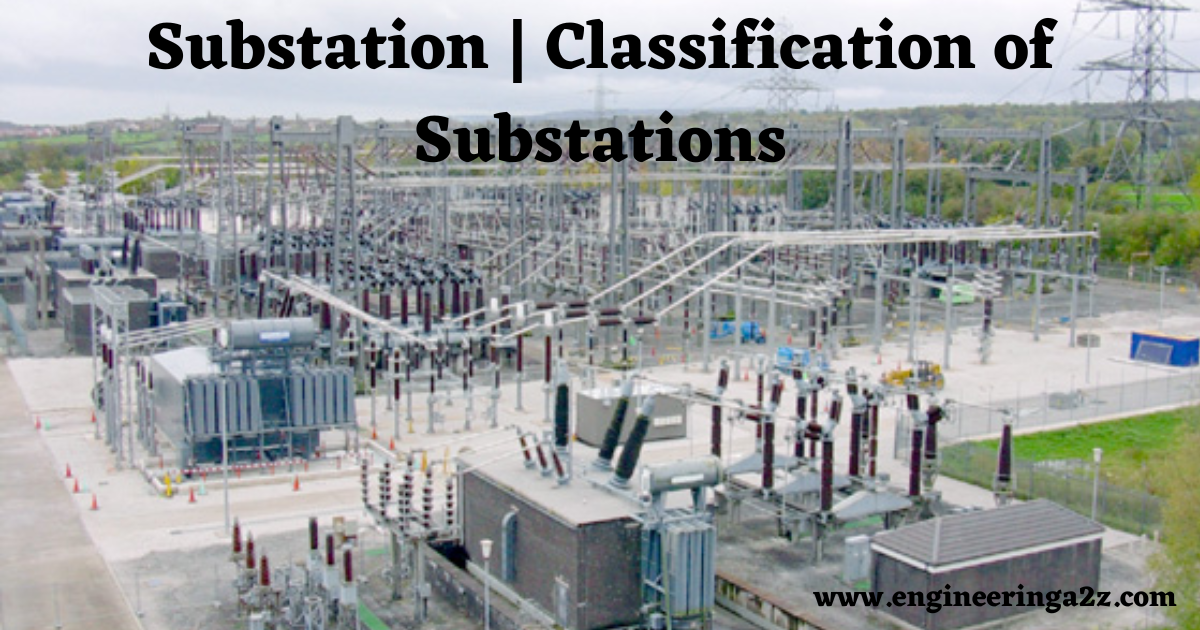
Table of Contents
Substation
A substation is part of an electrical power system that is used to transform high-voltage electricity from power generators into lower-voltage electricity that is suitable for distribution to homes and industries.
In professional terms, a substation is a part of the electrical power system that plays a critical role in the transmission and distribution of electricity. It is a facility that is used to transform high-voltage electricity from the power grid into lower-voltage electricity that is suitable for use by homes and industries.
In addition to voltage transformation, substations may also perform other functions such as switching, protection, and control of the power system. They may be used to regulate the flow of electricity and maintain the stability of the power grid. The following are the important points that must be kept in view while laying out a substation :
- It should be located at a proper site. As far as possible, it should be located at the centre of gravity of the load.
- It should provide a safe and reliable arrangement.
- It should be easily operated and maintained.
- It should involve minimum capital cost.
Classification of Substation
There are several ways of classifying substations. However, the two most important ways of classifying them are according to (1) service requirement, and (2) constructional features.
1. According to Service Requirement
A substation may be called upon to change voltage level or improve power factor or convert a.c. power into d.c. power etc. According to the service requirement, substation may be classified into :
(a) Transformer Substations
Those substations that change the voltage level of the electric supply are called transformer substations. These substations receive power at some voltage and deliver it at some other voltage. Obviously, the transformer will be the main component in such substations. Most of the substations in the power system are of this type.
(b) Switching Substations
A switching substation is a type of electrical substation that is used to switch and control the flow of electrical power between different transmission lines or distribution networks. It typically consists of various equipment, such as circuit breakers, switches, transformers, and other protective devices, that are designed to control the flow of electrical energy and ensure the safe and reliable operation of the power system.
These substations do not change the voltage level i.e. incoming and outgoing lines have the same voltage. However, they simply perform the switching operations of power lines.
(c) Power Factor Correction Substations
Those substations which improve the power factor of the system are called power factor correction substations. Such substations are generally located at the receiving end of transmission lines. These substations generally use synchronous condensers as the power factor improvement equipment.
(d) Frequency Changer Substations
Those substations which change the supply frequency are known as frequency changer substations. Such a frequency change may be required for industrial utilisation.
The frequency changer substation contains specialized equipment such as frequency converters, transformers, filters, and switchgear that are designed to adjust the frequency of the electrical power. This type of substation is commonly used in applications such as connecting power grids of different countries, providing power to large industrial facilities, or connecting power systems of renewable energy sources to the grid.
(e) Converting Substations
Those substations which change a.c. power into d.c. power is called converting substations. These substations receive a.c. power and convert it into d.c. power with suitable apparatus to supply for such purposes as traction, electroplating, electric welding, etc.
(f) Industrial Substations
Those substations which supply power to individual industrial concerns are known as industrial substations.
Industrial substations typically include power transformers, circuit breakers, protective relays, and other electrical equipment necessary for controlling and distributing power.
2. According to Constructional Features
A substation has many components (e.g. circuit breakers, switches, fuses, instruments, etc.) which must be housed properly to ensure continuous and reliable service. According to constructional features, the substations are classified as :
(a) Indoor Substations
An indoor substation is an electrical substation that is located inside a building. For voltages upto 11 kV, the equipment of the substation is installed indoor because of economic considerations. However, when the atmosphere is contaminated with impurities, these substations can be erected for voltages upto 66 kV.
Indoor substations are used in urban areas where space is limited, and there is a need to minimize the visual impact of the substation on the surrounding environment.
(b) Outdoor Substations
For voltages beyond 66 kV, equipment is invariably installed outdoor. It is because of such voltages, the clearances between conductors and the space required for switches, circuit breakers, and other equipment become so great that it is not economical to instal the equipment indoor.
(c) Underground Substations
In thickly populated areas, the space available for equipment and buildings is limited, and the cost of land is high. In such situations, the substation is built underground.
(d) Pole-mounted Substations
This is an outdoor substation with equipment installed overhead on H-pole or 4-pole structure. It is the cheapest form of substation for voltages not exceeding 11 kV (or 33 kV in some cases). Electric power is almost distributed in localities through such substations.
Read Also :
- High Voltage Direct Current (HVDC) Transmission
- 10 Difference Between Indoor and Outdoor Substations
- AC and DC System : What is AC and DC Transmission System
- Different Types of Faults in Overhead Transmission Lines





Leave a Reply